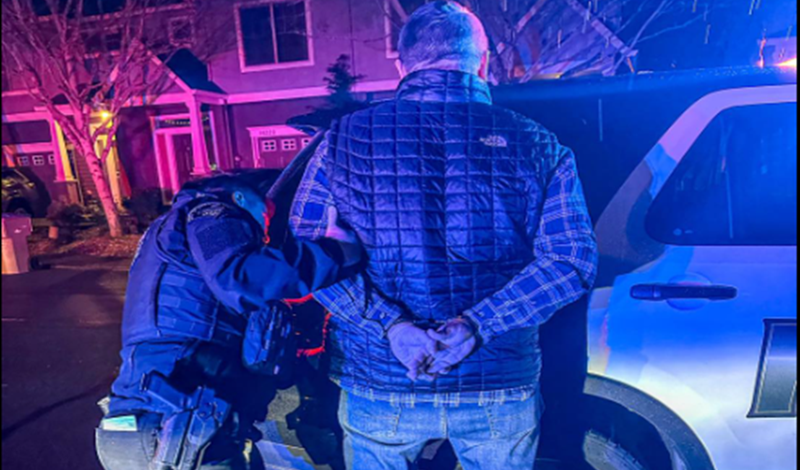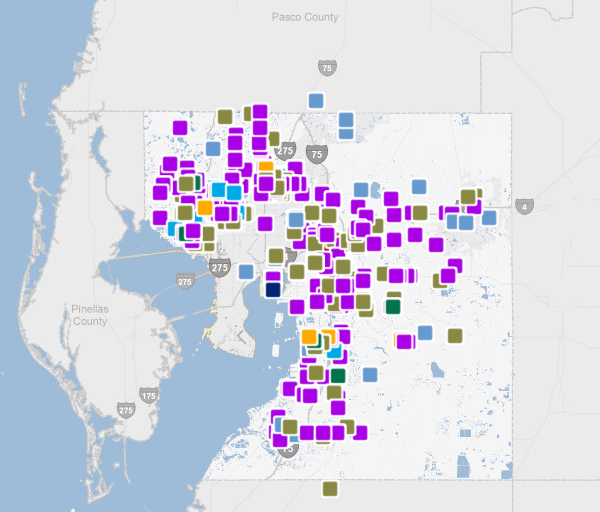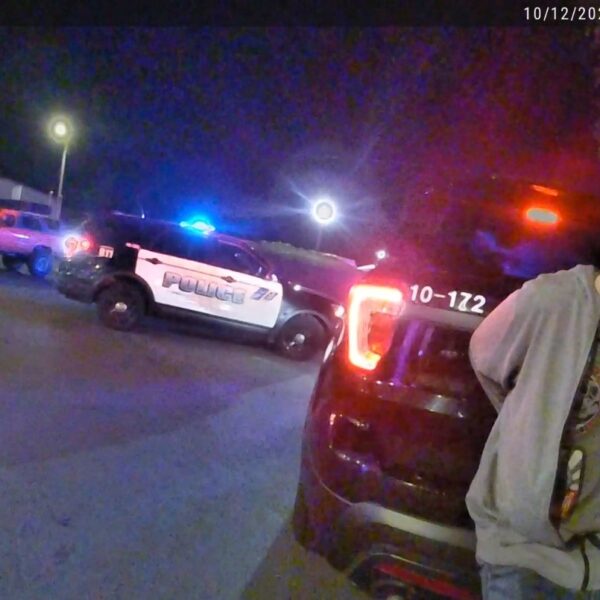
I recall my days as an adolescent when my dad used to sit for hours and listen to NYPD activities via his “scanner” whose varying “stations” were accessible with tiny shiny plastic things the size of a Chiclet (maybe smaller, thinner) called “crystals.” Our neighborhood supplier of individual chips was Radio Shack.
How far we’ve come since that bygone era! Present-day electronic accessibility to myriad materials trumps what we had back in the day.
Nowadays, you simply Google your law enforcement agency’s name, click their website, and tap the tab for “Calls for Service” or “Police Activity.” You’ll receive active and non-active calls responded to by cops…right there on your cell phone, laptop, tablet, Apple wristwatch, or desktop.
Not sure what Radio Shack is doing nowadays but I do know that local police organizations are involving their constituents (or whomever, wherever) via a virtual ride-along. At the same time, you do whatever else you may be doing (or nothing).
In Tampa, Florida, the sheriff’s office offers a “Calls for Service” button on their website. It has a color-coded legend indicating types of calls and the general locations, comprising several thousand deputies’ actions throughout the massive jurisdiction.

(Image courtesy of the Hillsborough County Sheriff’s Office.)
From small towns to metropolises, people can tune in to listen to real-time activity via police scanners.
In Kentucky, the Owensboro Police Department’s Live Scanner (“The Owensboro Police Scanner” is their archive where viewers can read prior calls for service) had 66 listeners when I dialed in, with not much happening (a good thing).
The Owensboro PD website contained this nugget: “The Owensboro Police Department is participating in the Police Data Initiative as a way to provide the community with information pertaining to YOUR police department and the crime in YOUR neighborhood. Providing this information will allow OPD to be more transparent and allow you to make educated decisions on the types of activities that are occurring in your city.
“Staying informed will allow the citizens of Owensboro to remain aware of crime trends. By Knowing what to look for, this information will help keep you safe and allow you to aid us in solving those crimes.”
The Shiawassee Police Scanner page provides the numerical codes to follow along their crimefighting
Conversely, the Philadelphia Police Department’s scanner traffic can be chaotic, exemplified in the following audio clip from an incident involving an officer shot by a suspect:
When I uprooted my origins in New York City to Florida, it was then that I came across law enforcement agencies I could easily dial up and listen to, literally. Some police organizations had their public safety telecommunicators dispatching calls Live on air.
That was how I practiced all the Florida-oriented numerical police codes, to make some sense out of all the radio traffic and what was what. Granted, I didn’t quite know all the numerical definitions but, the more I tuned in, the better dialed-in I became, enabling a general idea of what cops were mitigating and where.
I figured I had the nomenclature in the bag…until I learned that not all law enforcement agencies use the same numerical lingo.
For example, the Los Angeles Police Department uses code “187” for “Homicide” while in Florida it is S-5 (the S stands for “Signal”). Not even close.
And that is yet another thing not often mentioned: Lateral cops (sworn cops switching agencies) have to re-learn their new employer’s police codes (when hired in a different state than where they learned the ropes prior).
When it is geographically vast between the two agencies, the codes could be drastically different (as indicated above), so the lateral officers must essentially learn a whole new language. That may be an esoteric detail but…have you ever found it easy to learn a lingo you’ve never understood until you had to meet muster?
Following is a recent example of a law enforcement agency’s Calls for Service, compliments of the Sherwood Police Department (whose blotter poster has a police-oriented funny bone):
“The Sherwood Police Department is sharing a sample of the calls for service each week to inform and educate community members on the work we do.
“1/22/24 – 1/28/24: During the two weeks, Sherwood Police Officers engaged in approximately 333 activities, including 40 behavioral health/welfare check calls, 30 suspicious activity calls, 5 thefts, 9 disturbances, 11 traffic crashes, and made 22 arrests.
“Officers were dispatched to a theft in progress at Walmart. Loss Prevention reported a male filled a shopping cart of merchandise and when he attempted to exit the store without paying, he was confronted by the Loss Prevention employee. He ditched the cart near the exit and ran to his vehicle #RuunForestRuuun. As he was pulling out of the parking lot, an officer spotted his vehicle and activated his blueberries & cherries to pull him over #WoopWooop.
“The vehicle continued driving and tried to get away, but due to heavy bumper-to-bumper traffic in both lanes on Tualatin Sherwood, he couldn’t get very far. A low-speed pursuit was conducted, and the driver eventually gave up due to the heavy traffic. He was safely detained, identified, and had 10 warrants for his arrest #LotsOfFriendsLookingForHim. Felony warrants: Robbery 3, Theft 1, Probation Violation, Unlawful Use of a Vehicle (UUMW) x 2, and Forgery 1 out of Marion County, and Theft 1 out of Clackamas County. Misdemeanor warrants: Driving While Suspended (DWS)- Misdemeanor out of Marion County, DWS – Misdemeanor out of Linn County, and Theft 2 out of Albany. He was also on felony probation for UUMV out of Marion County. The stolen merchandise from Walmart was over $1,900. He was arrested for Theft 1, Attempt to Elude – Felony, and the warrants.”
There are several more pages of calls/reports from SPD…but you get the point.
In the age of transparency being on many minds, this is one other way for public safety outfits to apprise the citizenry of police busyness.

(Photo courtesy of the Longview Police Department.)
Also, given how much mainstream media spoon-feeds what they want you to hear (versus fact-based truths), this brand of public access serves the real skinny right from the horse’s mouth. Eat your heart out, CNN!
Because it is deemed public record by law and therefore easily accessible, some embarrassing civil matters are included (auto repossessions, evictions, and other non-criminal matters are listed). Law enforcement agencies are responsible for recording such civil processes.
Why repos? So that, when the now-towed vehicle owner wakes up and their car is no longer out front and they dial 9-1-1 to report it as “Stolen,” the police dispatcher first accesses their database to ascertain if it was repoed (before going the significant route of recording a felony crime and activating resources to locate the car).
Transparency has its limitations by law, though. The online general information provided by police is subject to sensitivities regarding details about children (names, age) or domestic violence victims whose relocation whereabouts cops must maintain confidentiality (since the abuser has equal access to public records). Generally, law enforcement personnel know the “safe house” and refer to it as such, nothing beyond that.
Here is an example for you to read, as provided by the Westchester County Police in New York: note how Officer Elena Cotto sanctified the victim in the in-confidence reference “a women’s shelter.”

(Photo courtesy of the Westchester County Police Department.)
In my career, in domestic violence cases where a victim needed relocation, the safe house was the go-to. Many domestic violence agitators flee, and some may return and lay in wait, necessitating investigators to scour acutely. Brazen and brutal are some.
I’ve had a few occasions where the abuser was spotted in relative proximity, pointed out by the victim (at which point they would re-excite and relive the whole godawful experience.
Although it may be considered melodramatic, the route to a secured shelter was always different…to ensure the abuser was not trailing behind (to inflict further malice and mayhem).
Citizens tapping into public access to police activities and cops on the go are not privy to everything but are availed generalities to offer transparency with exemptions such as those we just described.
In conclusion, I respectfully denote how this is one way to realize how your tax dollars are invested and the dividends offered by law enforcement organizations on your behalf, keeping you in the know about your cops on the go…